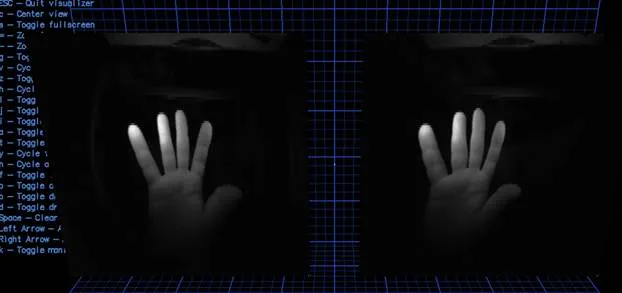February 2015 focused on evaluating high-resolution cameras for visual touch typing applications while finalizing patent drawings and completing Intel RealSense SDK migration work.
High-Resolution Camera Evaluation
The PTGrey Chameleon 3 USB 3.0 camera arrived, representing a significant step up in resolution for finger tracking. Multiple lens options were tested, including a zoomable lens that proved particularly versatile. Once Windows drivers were installed, experimentation confirmed the camera’s capabilities for capturing detailed hand and finger imagery.
This industrial-grade camera offered far better image quality than consumer webcams or depth sensors, though at significantly higher cost. For visual touch typing applications where distinguishing individual finger movements was critical, the resolution investment appeared justified.

Visual Touch Typing Hardware
The Hovercam Solo 8 document camera with 4K support and USB3 connectivity was set up specifically for visual touch typing concept development. Positioned directly above a monitor and keyboard, the camera captured hands and keyboard with sufficient detail to track individual fingers.
Experiments with the included WPF application confirmed the hardware setup worked well for this use case. The concept: display a real-time view of the user’s hands above the keyboard, potentially with transparent overlays, to help users learn touch typing or adapt to unconventional keyboard layouts. High resolution at desktop working distances required the 4K capability this camera provided.



Compact PC Platforms
The Guleek mini Windows PC with integrated battery arrived, offering another form factor option. Testing showed 4 hours of battery operation with light usage—sufficient for mobile demonstrations. However, WiFi performance proved disappointing, and Windows updates were troublesome to install. These compact PCs offered portability but often involved tradeoffs in connectivity and performance.
Sensor Technology Comparison
A comprehensive sanity check compared available sensor options for close-up thumb and finger detection:
- High-definition webcam: Difficult to clearly distinguish thumb from fingers
- PS3 Eye camera: Very grainy images, required IR illumination, difficult thumb identification
- Duo 3D stereo camera: Challenging to separate hand from background in depth data
- Leap Motion: Best contrast between hand/thumb/finger and background, though still imperfect at extreme close range
This analysis confirmed that Leap Motion’s image stream remained the best option for extreme close-up hand tracking, despite its limitations. The comparison also reinforced that no single sensor solved all visual touch use cases—different applications required different hardware approaches.
Intel RealSense Camera Arrival
A new Intel RealSense camera was received and set up in reversed position at the top of a monitor. The resolution proved adequate for visual touch typing applications. This validated that Intel’s newer depth cameras could support multiple use cases beyond the horizontal surface mounting originally prototyped.
Patent Drawing Refinement
Significant effort went into finalizing patent drawings for US and European submissions. Working with the patent illustrator, drawings were refined to meet strict requirements: numeric labels for all components, separate “proposed” and “alternative” drawing sets showing configurations with and without displays, and proper figure cropping for document formatting.
The patent documentation review revealed the underlying innovation was stronger than ongoing rejection responses suggested. Understanding the full scope of what had been claimed provided renewed confidence in the technical contribution’s novelty and value.
Preliminary patent examination results came back positive, offering encouragement amid the challenging process of navigating international patent systems.
Hardware Integration Challenges
Creative camera cable repair was attempted after mechanical failure, involving stripping back braiding to expose internal wiring. The fault was isolated to SuperSpeed USB cables while USB 2.0 audio functionality remained operational—a common failure mode for USB 3.0 cables under mechanical stress.
Intel RealSense installation on non-Haswell chipset systems proved futile, confirming the camera’s strict hardware requirements. These compatibility constraints continued to complicate development environment setup and demonstration logistics.
The month balanced multiple workstreams: exploring new camera technology for visual touch typing, completing patent documentation, and maintaining progress on core depth sensing prototypes. Each hardware evaluation built knowledge about sensor capabilities and limitations that would inform eventual product design decisions.